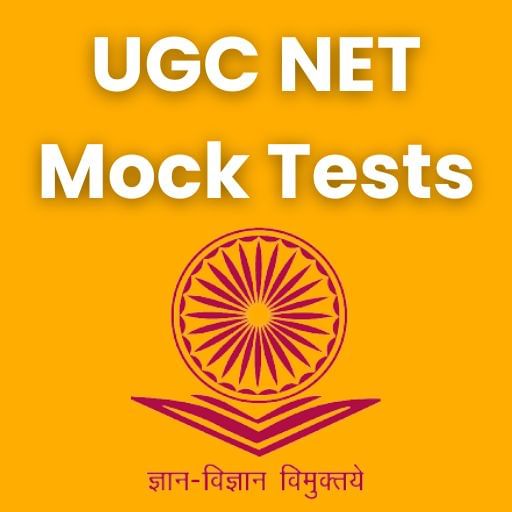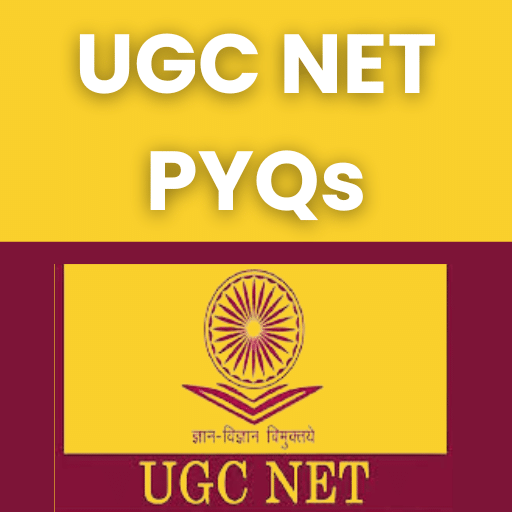Introduction
Growing needs of growth and expansion, on the one hand and increasing efficiency and productivity to combat competition, on the other, emphasize on an increase in creativity and autonomy of the people in the society. The expectations of the people are changing fast. They want to be dealt with and respected as human beings and are to be provided opportunities for the fuller expression of their potentials. HRD helps the organization not only in the attainment of its objectives but also provides opportunities to the people to fulfill their requirements, and get maximum job satisfaction. Human resources are the most valuable of all the resources whether potential or existing in any organization and the most vital for the successful achievement of its objectives. The contribution they make may not be arithmetically calculable but it is indeed highly significant in achieving the organizational goals.
Human Resource Development (HRD) is, therefore, gaining significance in the success of any industrial organization. The organizations today have realized that it is the contribution of the human resources which helps them to grow, proper and attain their objectives. Human resource development (HRD) aims at developing all the employees of an organization in a planned manner not only to acquire and apply their existing capabilities but also their inner potentials and helps in building a climate with strong interpersonal bonds which helps the organization to achieve its goals.
HRD Concept
Human Resource Development (HRD) is a continuous process to ensure the development of employee competencies, dynamism, motivation and effectiveness in a systematic and planned way. In the organizational Context HRD refers to the improvement in capacities and capabilities of the personnel in relation to the needs of the organization. It involves the creation of climate where human knowledge, skill, capabilities and creativity can bloom. It involves the use of processes through which the employees of the organization are prepared to give their best for the achievement of corporate objectives and bring optimal effectiveness in their jobs as well.
Rao, T. V. (1991) has stated that: ―Human Resource Development (HRD), in organizational context, is a process by which the employees of an organizational are helped in a continuous and planned way, to a) acquire or sharpen capabilities required to perform various functions associated with their present or future expected roles; b) develop their general capabilities as individuals and discover and exploit their own inner potentials for their own and/or organizational development purposes; and c) develop an organizational culture in which superior-subordinate relationship, teamwork, and collaboration among the sub-units are strong and contribute to the professional well-being, motivation and pride of the employees.'
Rao (1991) further explained that HRD aims at helping people to acquire competencies. The process of acquisition can be facilitated by HRD mechanisms (instruments/sub-systems) like performance appraisal, training, OD, feedback and counseling, career development, potential development, job rotation and rewards.
In his book Handbook of Human Resources Development, Nadler (1984), has defined Human Resource Development as organized learning experiences in a definite time period to increase the possibility of improving job performance and growth. Explaining the various parts of the definition, Nadler defined organized learning experiences as intentional learning structures with objectives, a plan and provision for evaluation. Defining the term 'A definite time period‘, he has stated it as agreed upon and identifiable point at which a particular phase of learning has been completed. Further the term 'To increase the possibility of‘ means HRD would provide the learning but can not guarantee that learning experience will change performance. While explaining 'Improving job performance‘ he stated that the most organization sponsored HRD aims at affecting job performance. 'Growth‘ helps individuals to grow so that they will be ready to move with the organization. According to Nadler, HRD encompasses these learning areas, improving performance on an individual‘s present job, preparing individual for an identified job in near future and general growth 'Not related to specific job‘.
HRD Objectives
The major objective of HRD is to prepare employees to cope with functional complexities and facilitate integration of changes. The changes may be social, economic and technological. The people development process is, therefore, the synthesis of efforts on two fronts — preparing individuals for technological competence and psychological acceptance for willing participation in change implementation. The focus of HRD has to be more on conditions of the organizational climate (Rao, 1992). In fact, HRD aims to achieve multiple goals as follows:
Employee Competency Development
HRD also helps people to perform the roles or functions which may be assigned to them in future and tries to develop their potentials for future likely jobs/roles in the organization by enabling them to develop their competencies including knowledge, attitudes and skills to perform different tasks or functions and combat the changes occurring in the environment, organizational priorities, goals and strategies, technology, new knowledge base, new challenges etc.
Employee Motivation Development
HRD aims at developing the motivation of employees to maximum possible extent so that they can become dynamic contributors to organizational goals as motivation is a commitment to the job, work and the organization. It is also the desire to make things happen. Without motivation employees are not likely to give their best. Motivation is influenced by various factors such as one‘s own needs, personality and habit patterns, supervisor‘s style and behaviour, personnel policies, organizational culture and environment, career opportunities and reward mechanisms.
Organizational Climate Development
HRD also aims at climate development. A healthy organizational climate helps in utilizing and enhancing employee competencies and developing employee motivation. A healthy climate is one which is characterized by:
a) Pro-activity: Employees are action oriented and willing to take initiative.
b) Openness and risk taking: Employees feel free to express their ideas and are willing to take risks, experiment with new ideas and new ways of doing things.
c) Collaboration: Employees collaborate with each other and have a feeling of belongingness towards the group and the organization.
d) Trust and authenticity: Employees and work groups trust each other and can be relied upon to do whatever they say they will do.
e) Confrontation: Employees face problems and issues without hiding or avoiding them.
f) Autonomy: Employees have some freedom to act independently within the boundaries of their role/ job (Rao, 1991).
The elements of HRD climate can be grouped into three broad categories — general climate, OCTAPAC culture and HRD mechanisms. The general climate items deal with the importance given to HRD in general by the top management and line managers. The OCTAPAC items deal with the extent to which openness, confrontation, trust, autonomy, pro-activity, authenticity and collaboration are valued and promoted in the organization.
The items dealing with HRD mechanisms measure the extent to which these mechanisms are implemented seriously. HRD climate can be developed if top management has a strong belief in the capabilities of its people and its policies show high concern for employees. HRD sub-systems and increasing effectiveness also help in building HRD climate.
II. Statement of the Problem
'Human Resource‘ are the most important and valuable resource for every organization. It is the competent and motivated workforce that makes things happen and helps the organization to achieve its goals. In fact, effective employees contribute to the effectiveness of the organization. Organizations, therefore, need to contribute to the dynamism, competency, motivation, efficiency and effectiveness of the employees continuously. Human Resource Development is a continuous process which ensures the employee development in a systematic and planned manner. It aims at developing the competencies of the employees on the one hand and building organizational culture on the other, to utilize these competencies and contribute to the organizational growth.
Keeping the significance of Human Resources in an organization in mind, the present study has been undertaken. The study explores the linkages in human resource development mechanisms generally applied in the organizations and HRD climate variables resulting from it, affecting the development of the employees of the organization and their impact on organizational efficiency and effectiveness. The researches undertaken in the past clearly indicate that there exists a relationship among the HRD mechanisms, HRD climate variables and HRD outcome variables. The efforts have been made to explore these relationships.
Objectives of the Study
The study seeks to answer the following questions:
1. Whether the Indian Organizations attach significance to the Human Resources and the top management is concerned about it?
2. What are the main HRD subsystems being applied in these organizations in India?
3. Whether there exist HRD climate variable in these organizations?
4. To what extent the HRD variables contribute to the development of organizational growth, productivity and effectiveness?
Methodology
The data and material has been collected from various books and journals on HRD. Although the secondary data has been used for the study, the researchers have also used their experiences in few pharmaceutical companies and personal interaction with the officials of these companies on the problem stated above.
The analysis has been made on the basis of the studies undertaken in the past on different aspects of human resource development. The various mechanisms applied by the organizations have been analyzed on the basis of these researches. Similarly, the HRD climate variables and their impact on organizational effectiveness have been analyzed on the basis of available research material. No specific statistical tools have been used for the analysis. However the data has been compiled and analyzed in a manner to provide significant results.
Significance of the Study
The study is of great significance to the academicians and researchers as it not only strengthens the theoretical base of HRD but also tries to analyze the relationships among the various HRD mechanisms, there linkage with HRD climate variables and HRD outcome variable. The analysis provides an insight into the overall development climate building up for growth and effectiveness. It will help the researchers to undertake future research on these aspects.
Limitations As the study is based on secondary data taken from books/ journals, it has limited impact in view of the present environment which is changing very fast. Further, results need to be authenticated in view of globalization and liberalization of the world economy, new practices and new methods being applied in the organizations
III. Framework of HRD
Human Resource Development is a continuous process that helps an organization to develop competent, dynamic and growth oriented people. But the competence and dynamism can be created when the organization has a developmental climate. HRD is developed through HRD mechanism which enables HRD Climate development. A good developmental climate results organizational effectiveness and ultimate growth of the organization. Figure-1 presents a framework of relationship in HRD mechanisms, HRD climate variables and HRD outcome variables in our industries.

Figure-1: Linkages in HRD Mechanisms, HRD Climate and HRD outcomes
HRD Mechanisms/ Sub-Systems
In order to develop the capabilities of each employee in the organization and collaboration among the different units of the organization, HRD sub-systems or mechanisms are applied in every organization.

Some of the HRD mechanisms including performance appraisal, potential development, feedback and counseling, training and communication, O.D., Human Resource Information System etc. are practiced in Indian Industries. These mechanisms have been shown in figure 2.
HRD Climate Development Variables
The HRD mechanisms facilitate in the development of HRD climate in the organization.

Rao has highlighted the development of OCTAPAC culture in the organization through the practice of HRD mechanisms. OCTAPAC culture means a culture being developed in the organization where there is an atmosphere of openness, confrontation, trust, autonomy, pro-activity, authenticity and collaboration. The HRD climate variables have been presented in Figure-3.
The figure shows that HRD facilitates free expression of ideas, team building, freedom to act independently, initiative taking and problem-solving. They help in achieving the goals of the organization.
HRD Outcomes Variables
The existence of good HRD climate in an organization surely results in the growth of the organization in terms of Higher Productivity, Lesser Cost, more profit and better image. Besides it helps in developing more competent people, increasing job satisfaction, team work and respect for each other. It also helps in better utilization of Human Resources and better organizational health. Various HRD outcome variables in the organization have been shown in Figure-4.
The framework indicates that organizational effectiveness to a great extent are affected by competent, committed, satisfied and dynamic people as they are likely to do better as compared to other organizations which do not have such people. Similarly an organization that has better HRD climate and processes is likely to be more effective than any other organization which doesn‘t have them. These HRD climate variables are generated largely by the use of HRD mechanisms or sub-systems by the organization.


























